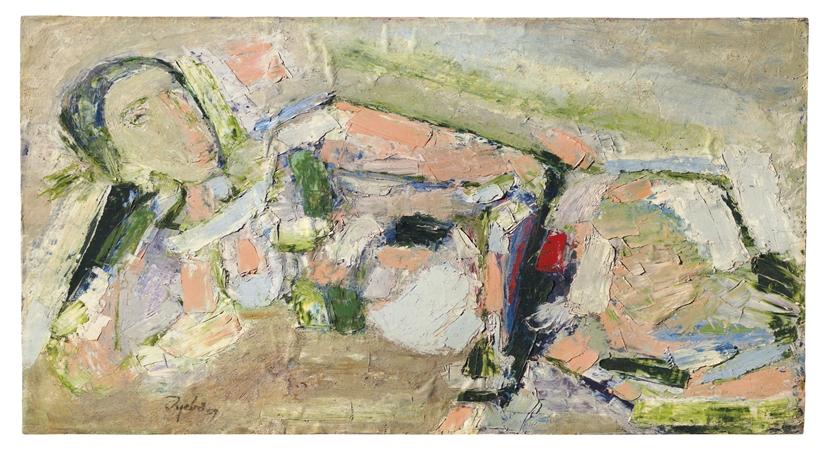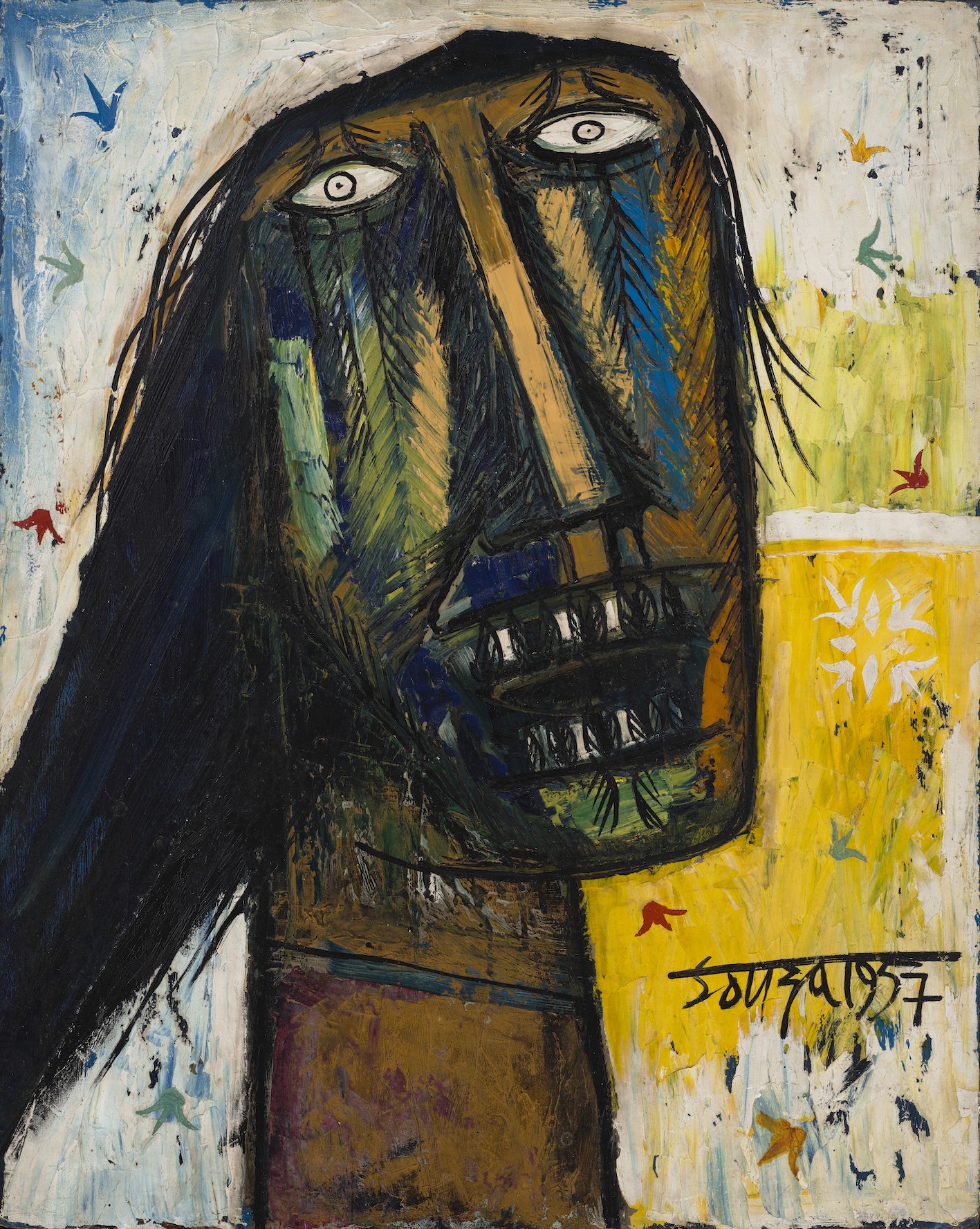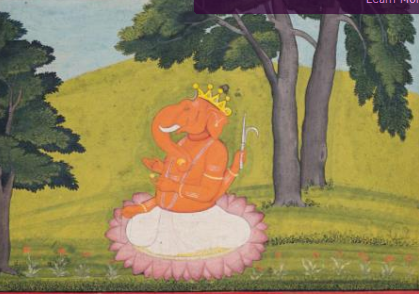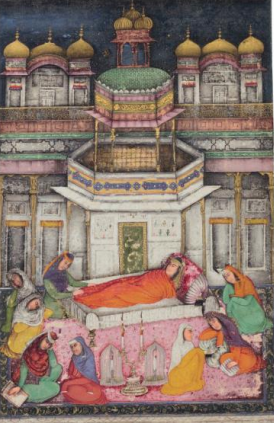Cover Story
South Asian Modern and Contemporary Art ready to go online for bidding

The auction will also feature important works by other pioneers of modern South Asian art such as N.S. Bendre, Dhurandhar, Jagdish Swaminathan, Jehangir Sabavala, Sadequain, George Keyt and Zainul Abedin
ByIANSlife Features
July 8, 2020 (IANSlife) A total of 64 works retrace 100 years of creative endeavours and artistic production in the South Asian subcontinent will be available as part of Asian Art Week online, presented by Christie’s.
Works by Tyeb Mehta, Francis Newton Souza, Maqbool Fida Husain, Akbar Padamsee, Sayed Haider Raza and Ram Kumar represent the best of the Progressive Artists’ Group will be available in its South Asian Modern + Contemporary Art auction, which opened for on 7 July and closes on 22 July.

USD $700,000-900,000
The auction will also feature important works by other pioneers of modern South Asian art such as N.S. Bendre, Dhurandhar, Jagdish Swaminathan, Jehangir Sabavala, Sadequain, George Keyt and Zainul Abedin. Additionally, the sale includes a sculpture and print by the late contemporary artist Zarina, and a group of works on paper by Nasreen Mohamedi from a private collection in Turkey. The last two lots of the sale have been donated by the artist Imran Qureshi (b.1974) to benefit student performance arts at the National College of Arts (NCA) in Lahore.
Nishad Avari, specialist and Head of Sale noted, “This July as part of the first virtual Asian Art Week in New York, we are excited to present a standalone online auction of South Asian Modern + Contemporary Art. The sale includes several masterpieces that have never been offered at auction before, including one of Tyeb Mehta’s first and most seminal versions of the Falling Figure, painted in 1965, and Francis Newton Souza’s Frightened Head from 1957, both with stellar provenance and notable exhibition histories.”

IN. PAINTED IN 1957
USD $150,000-250,000
The human figure remained the central focus for six decades of Tyeb Mehta’s (1925-2009) artistic career. An early stylistic turn in Mehta’s work followed his stay in England from 1959 to 1964, which resulted in a new Expressionist vocabulary on his canvases. 'The Falling Figure', a subject Mehta began to explore during this period, was born out of a traumatic childhood memory he carried of witnessing the violent death of a man during the bloody Partition riots of the Subcontinent in 1947. This monumental painting from 1965 Untitled (Falling Figure) [ill. page 1 left; estimate $700,000-900,000] is possibly Mehta’s earliest exploration of the seminal trope of the Falling Figure in his work, an iconic representation of fear and anxiety in the face of a violent and unavoidable cataclysm in society.
Gallery One in London, under the direction of the famed art dealer and poet, Victor Musgrave, was essential in the early development of Francis Newton Souza’s career. One of the gallery’s investors, Robin Jared Stanley Howard, was also a great supporter of Souza. Originally part of Howard’s storied collection, 'Frightened Head', painted in 1957 also comes for the first time to auction with an estimate of $150,000-250,000 (ill. page 1 right).
Unusually for Souza, who frequently depicted woman as creatures of beauty, purity or desire, this Frightened Head portrays a terrified subject in quarter length format. Rich impasto broken with thick black lines reveals a fearsome face with an extended symbolic snout, reminiscent of African tribal masks. Gritted teeth resemble steel grills framing the black wide mouth, seemingly howling in anguish. Using a chalky background to intensify his subject and her features, Souza renders this terrified woman with his signature dynamism and vitality.
MAKING IMAGINATIONS SOAR
The auction includes two works donated by the artist Imran Qureshi (b. 1974) to benefit student performance arts at the National College of Arts (NCA), Lahore, Pakistan, where Qureshi received his education at the iconic Miniature Painting Department. Today he teaches as professor at this same department. 'Fabric of Heaven', painted in 2020 is estimated at $25,000-35,000, and Opening Word of this New Sculpture (ill. right), painted a year earlier in 2019, is expected to realise between $20,000-30,0000.
The two works by Qureshi featured in this auction are from the same series. The work titled 'Opening Word of This New Scripture' seemingly appears like the pages of a manuscript with the scarlet leitmotif of foliate vocabulary interspersed with the drips and splatters of gestural abstraction. The second work Fabric of Heaven, makes use of the same imagery but the work changes as Qureshi introduces gilding to create a paradoxical representation of violence against the use of the gold leaf as representation of eternity or heaven.
INDIAN, HIMALAYAN & SOUTHEAST ASIAN ART GO ONLINE & BIDDING OPEN FROM 7 TO 23 JULY 2020
The sale offers an overview of 10 centuries of Southeast Asian culture by offering a total of 86 lots. The earliest work of art is dated 9th century, and the latest is from the late 19th century. Geographically the works cover India, Sri Lanka, Nepal, Tibet, China, Thailand, and Cambodia.
The painting from Guler depicts the Lord Ganesha seated on a lotus flower. In his trunk he holds a ladoo, the god’s preferred sweetmeat, and his four arms carry an elephant goad, a rosary and a second ladoo. The image is strikingly painted using a restricted palette, and is unusual in that the god is shown crowned. The horizontal stripes on his body indicate the Shiva ambit of his worship.

The popular tale Yusuf wa Zulaikha of Jami follows the complicated romance between Yusuf (Joseph) and Zulaikha, wife of the Egyptian official Potiphar. This finely executed painting signed by Muhammad Nadir al-Samarqandi in AH1015 (1606-1607 CE) portrays a scene in which the young Zulaikha dreams of Yusuf, establishing her enduring love before she encounters him as a grown woman.
Zulaikha is depicted on a bed in the center of her bedchamber, comfortably wrapped in a bright orange blanket, dreaming of her true love as attendants sleep beside her on the floor. Her gently parted lips reveal a sweet smile as she envisions her spiritual husband. A palace wall topped with two chattris spans the background and a hexagonal pavilion juts out behind the figures. On the second tier of the pavilion, the painting is inscribed: I have no confidence in my work It is with your greatness that I gain my hope In the year of AH 1015 The humble servant, Muhammad Nadir In the early seventeenth century, during the reign of the Mughal emperor Jahangir.

The painting of Nairatmya is of the style associated with the Xumi Fushou Temple in Chengde, outside Beijing (estimate: $30,000-50,000 | £25,000-40,000 | €27,000- 44,000). Likely painted in the imperial workshops of the capital for the decoration of the esteemed temple, it belongs to an imperial Chinese school of Tibetan-style Buddhism that flourished in the eighteenth century during a period of cultural interchange between China, Mongolia, and Tibet. The Xumi Fushou Temple was completed in 1780, under the orders of the Qianlong Emperor.

On the occasion of his seventieth birthday, Qianlong invited Lobsang Palden Yeshe, the Sixth Panchen Lama and the second most important religious leader of the Geluk sect of Tibetan Buddhism after the Dalai Lama, to visit him in Chengde outside Beijing. As a fantastic gesture of good will, and a display of his power, Qianlong commanded his architects and builders to replicate the Tashi Lhunpo Monastery, seat of the Panchen Lama in Tibet, in the summer retreat of Chengde. The resulting Xumi Fushou Temple was completed in time for the celebration and the visit of Lobsang Palden Yeshe.
(This article is a website exclusive and cannot be reproduced without the permission of IANSlife)
IANSlife can be contacted at ianslife@ians.in


